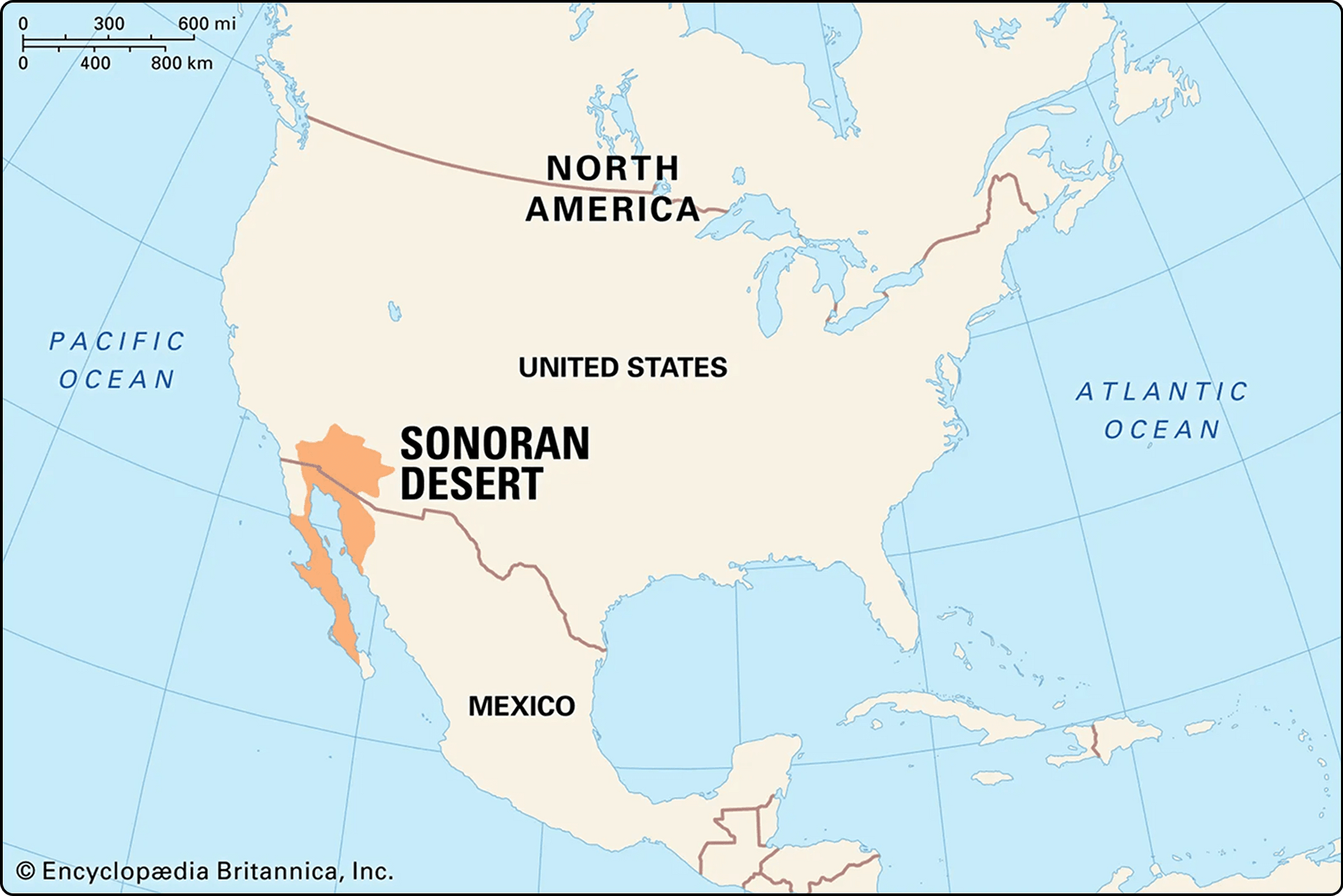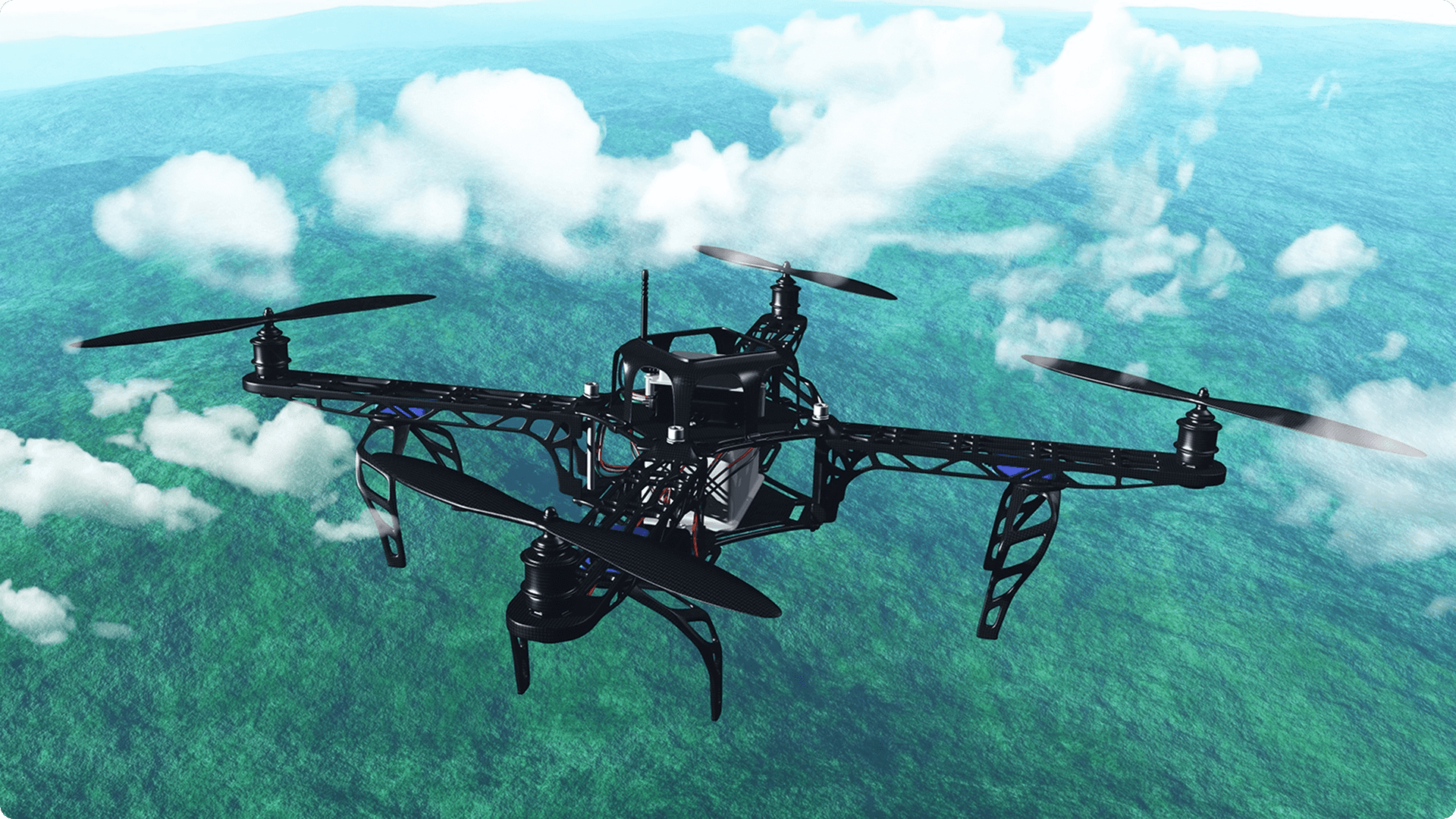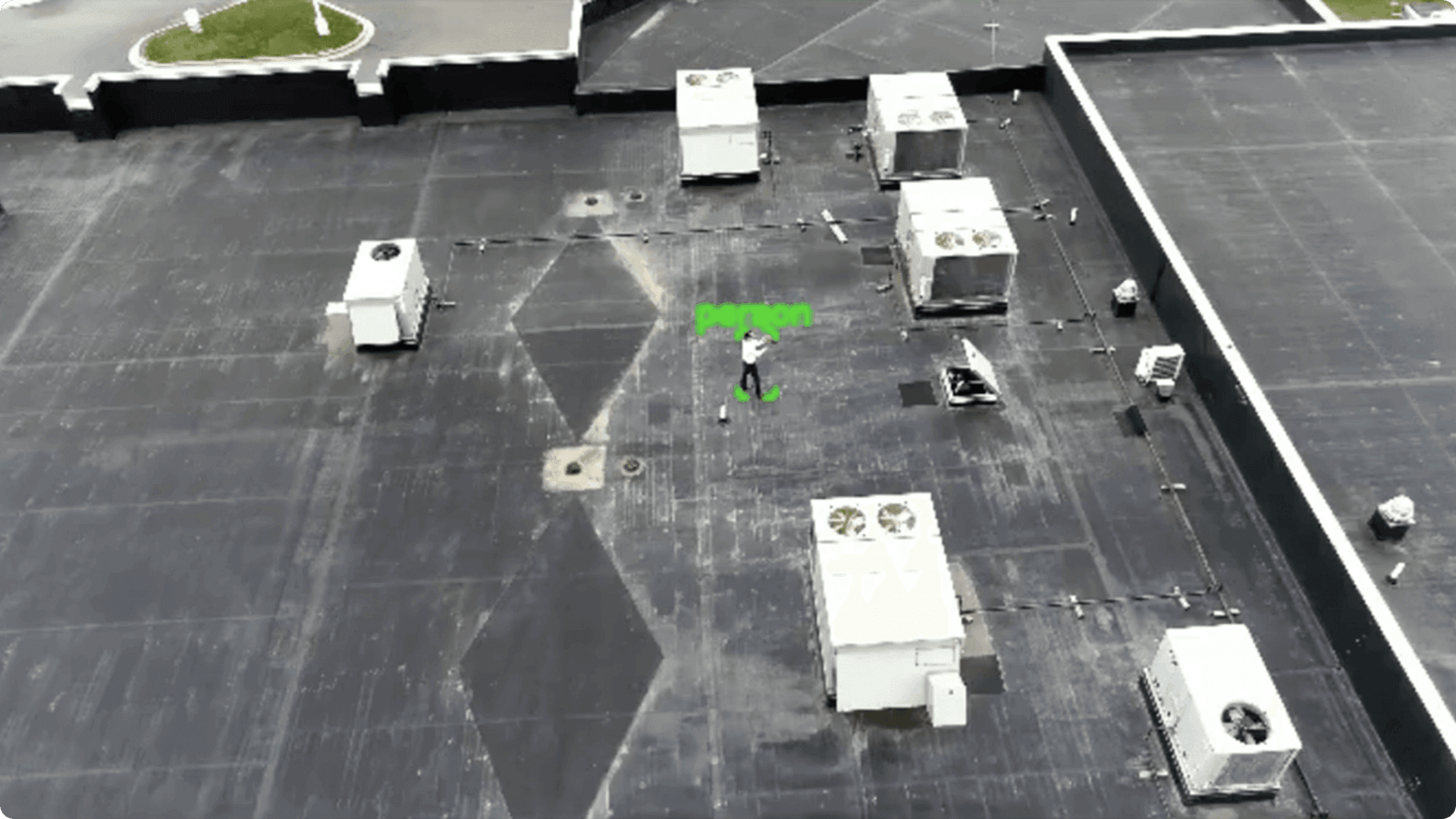
Southern Border: Cartels, Wagner, and Drone Warfare

Albert Stepanyan
President and CEO at Scylla AI
The U.S. has labeled Mexican drug cartels as foreign terrorist organizations (FTOs), a move that could lead to military action. This decision, along with declaring a national emergency at the southern border, brings up important questions about the future relationship between the U.S. and Mexico and the fight against these cartels.
Labeling the cartels as FTOs doesn't mean immediate military action, but it does give the government more power and money for border missions. There are reports of plans to send more troops to the border and possibly use military bases to hold migrants. While this shows a strong intent to disrupt cartel activities, it also raises concerns about the safety of the troops stationed at the border.
A key part of the border emergency declaration is a required joint report from the Secretaries of Defense and Homeland Security to the President. This report will look at border conditions and suggest further actions, which could include using the Insurrection Act of 1807. If used, this act would allow the U.S. military to directly engage with cartels, possibly leading to raids and arrests. The FTO designation sets the stage for justifying the use of the Insurrection Act.
The FTO designation also allows for seizing cartel assets, sanctioning U.S. citizens with cartel ties, and restricting cartel members' entry into the U.S. It also permits the use of military intelligence, addressing the challenge of accurately locating cartel leadership and operations.
Historical examples, like Plan Colombia, offer a possible model. In that case, increased military aid and cooperation, along with intelligence sharing and targeted support for Colombian security forces, significantly weakened the FARC cartel. However, the complex nature of Mexican cartels presents a different challenge.
The potential consequences of military action are significant. While it could disrupt cartel operations, reduce drug flow, and improve regional security, it also carries risks. These include straining U.S.-Mexico relations, increasing civilian casualties, and potentially leading to cartel retaliation. This retaliation some experts say may involve the elements of Hybrid Warfare sponsored by adversary states like Russia.
The shifting landscape of modern warfare
The ongoing conflict in Ukraine has rapidly transformed military tactics and technology. Both Russia and Ukraine have developed specialized units skilled in drone warfare and unconventional operations.
This conflict has also reshaped the global mercenary market. The prominence of private military companies (PMCs) has increased, with groups like Russia's Wagner Group playing significant roles in combat operations. These PMCs often employ highly trained operatives proficient in covert reconnaissance and precision strikes.

Given Russia's history of using hybrid and asymmetric warfare tactics against Western countries, some analysts suggest that Russian mercenary groups, such as the Wagner Group, might become involved with criminal cartels. These mercenaries have gained extensive battlefield experience in places like Syria and Ukraine, particularly in modern warfare techniques and drone operations. Their expertise could be highly valuable to cartels seeking advanced military training. Reports have already indicated the presence of Russian mercenaries in regions like Venezuela, suggesting a potential for collaboration with local criminal organizations.
As these developments unfold, it's crucial to monitor how the expertise of these specialized units might be utilized by non-state actors, potentially redefining the nature of conflicts in various regions, including areas like the Southern Border.
From Ukraine to the Southern Border
Cartels have a history of seeking outside military expertise. The creation of Los Zetas by the Gulf Cartel, using former Mexican special forces, showcased the devastating impact of integrating trained soldiers into criminal organizations. More recently, reports of cartels like the Jalisco New Generation Cartel employing foreign mercenaries to train their members in advanced tactics, including drone warfare, suggest this trend continues, posing an increasingly complex challenge to border security.
With the increase of these highly trained fighters, cartels are becoming more powerful and dangerous. This trend could lead to more violence and instability, especially in areas like the Southern Border, and result in direct attacks toward the US military personnel.
Given the intense combat in Ukraine, the most brutal conflict in Europe since World War II, it's logical that drug cartels would seek to hire mercenaries and advisors with recent battlefield experience such as Wagner operatives.
Vulnerabilities along the Southern Border: an overview
The U.S. southern border stretches nearly 2,000 miles along varied terrain—from vast deserts and rugged mountains to urban areas along the border. This diversity of geography, combined with the challenges of monitoring extensive and often inhospitable terrain, has long presented vulnerabilities that cartels have exploited. In recent years, these vulnerabilities have been compounded by sophisticated infiltration tactics employed by drug cartels, who invest heavily in technology, personnel, and covert infrastructure.
Geographic and infrastructural weak points
1. Remote and Rugged Terrain Large swaths of the border traverse remote deserts, arid plains, and rugged mountains. These areas often have minimal infrastructure and limited surveillance, making them ideal for covert crossings.

Geographic and infrastructural weak points
Deserts and Open Spaces: The Sonoran and Chihuahuan Deserts, for instance, offer vast, sparsely populated regions where natural obstacles and extreme environmental conditions both deter casual observation and hinder rapid law enforcement response.
Mountainous Regions: Areas where the border runs through or near mountainous terrain present additional challenges. The natural cover provided by rocky outcrops and steep slopes can be used to mask illicit activities.
2. Urban Corridors and Legal Entry Points While remote areas are vulnerable to covert crossings, urban areas along the border also have their own set of challenges.
High-Traffic Ports of Entry: Busy border crossings and legal ports of entry, such as those in major cities, may be exploited by criminals through the use of diversionary tactics or by concealing contraband among legitimate travelers and commerce.
Urban Areas: Urban areas along the border sometimes serve as logistical hubs for smuggling operations. Limited resources and complex local governance can hamper effective coordination between local law enforcement and federal agencies.
3. Artificial and Natural Barriers Incomplete Barriers: In regions where physical barriers are incomplete or non-existent, smugglers have adapted by using advanced technology, such as drones for aerial reconnaissance, to identify gaps in security.
Natural Crossings: Rivers, such as the Rio Grande, and other natural features continue to serve as traditional crossing points that are difficult to fully secure, particularly during periods of high water or adverse weather conditions.
Cartel infiltration points: tactics and trends
1. Smuggling Tunnels and Subterranean Networks One of the hallmark methods employed by cartels has been the construction of extensive tunnel networks.
● Tunnels as Infiltration Channels: Over the years, multiple tunnels have been discovered along the border—particularly in Texas and Arizona—designed to facilitate the covert movement of drugs, weapons, and personnel. These subterranean passages can be highly sophisticated, complete with ventilation, lighting, and rail systems to transport contraband. ● Adaptability: As border security improves on the surface, cartels have increasingly turned to underground routes to circumvent detection, investing in tunnel technology and regularly adapting their methods. ● Cartels can utilize Hamas's (designated as a terrorist organization) experience and methods in Gaza further complicating counter-terrorism activities.
2. Use of Technology for Surveillance and Disruption Modern cartels have adopted advanced technological tools to identify and exploit vulnerabilities:
● Drone Surveillance: Unmanned aerial vehicles (UAVs) are now employed to monitor border patrol movements and locate weak spots in surveillance coverage. This allows operatives to time their crossings with greater precision. ● Cyber and Signal Jamming: There are concerns that cartels could leverage cyber tools to interfere with communication networks used by border security, further complicating efforts to secure vulnerable regions.
3. Local Corruption and Insider Support Infiltration is not solely a matter of geography or technology. In some cases, local corruption or the collusion of insiders can significantly undermine border security:
● Corrupt Networks: Cartels may exploit local vulnerabilities by bribing officials or leveraging established networks of influence in border communities. This creates safe havens and reliable channels for moving contraband across an otherwise heavily monitored border. ● Community Ties: In certain areas, long-standing social and economic ties between communities on both sides of the border can blur the lines between legal and illicit activities, making detection and interdiction more challenging.
Potential Wagner involvement
While the presence of cartels alone presents a significant security concern, the potential collaboration with experienced mercenaries like those from the Wagner Group represents a concerning escalation. These mercenaries bring not only battlefield experience but also access to advanced weaponry and tactics, potentially amplifying the existing vulnerabilities along the border. Understanding these vulnerabilities becomes crucial in anticipating how such groups might exploit them and developing effective countermeasures.
Envisioning the potential Wagner engagement scenarios along the southern border requires blending insights from the Ukraine War and the reality on the ground:
1. Hybrid Battlefields Wagner is highly specialized in hybrid warfare and Non-Conventional Tactics: The use of drones, cyber attacks, and covert ground operations could redefine the battlefield. Urban and border environments might become testing grounds for these methods.
2. Cartel Involvement and Asymmetric Threats Cartels, with their deep financial reservoirs and networks, could transform the nature of conflict:
● Targeted Attacks: By contracting with specialized operatives, these groups might carry out precision strikes against military personnel and border protection officers. ● Diversionary Tactics: Sophisticated operations could be used to create diversions or destabilize border regions, complicating response efforts from federal agencies.
3. Technological Warfare Advances in drone and surveillance technologies, refined on the battlefields of recent European conflicts, would likely play a central role:
● Drone Warfare: Small, agile drones equipped with precision munitions or surveillance capabilities could be deployed in swarms to overwhelm traditional defenses. ● Cyber Operations: With the border increasingly becoming a high-tech frontier, cyber-attacks could disrupt communications, logistics, and command-and-control systems on both sides of the conflict.
4. Psychological and Information Warfare Modern warfare is as much about controlling narratives as it is about physical combat:
● Disinformation Campaigns: The same networks that distribute conventional weaponry may also be used to disseminate false information, sowing confusion among military ranks and the general public ● Media Manipulation: As seen in past conflicts, control over information channels can be used to undermine the legitimacy of state institutions and border security measures.
A high-tech defence against modern threats
The southern border faces more complex challenges than ever before. Modern threats from Mexican cartels (FTO) powered by mercenary groups such as the Wagner use asymmetric tactics and hybrid warfare to bypass traditional defenses. To counter them, we must rely on advanced surveillance and reconnaissance systems that provide constant monitoring, rapid threat detection, and quick response. By integrating cutting-edge technology with smart analytics from platforms like Scylla AI, we can build a robust, real-time security network.
1. Smart Surveillance Imagine a border where every inch is watched 24/7 by smart CCTV cameras and radar systems. These tools work together to monitor activities in all weather conditions and at all times of day. With this network in place, any unusual movement or suspicious behavior is quickly detected and flagged, ensuring that the response teams have a complete, real-time picture of the situation. The constant flow of visual and sensor data allows border protection officers to react immediately to potential threats, preventing breaches before they occur.
2. Autonomous Drones Even the best ground-based systems have blind spots. Autonomous drones fill these gaps by patrolling areas where fixed cameras or sensors might not reach. Programmed to cover specific zones, these self-flying drones continuously gather information, ensuring that no part of the border remains unmonitored. Their flexibility and independence mean that even in the most remote areas, every possible intrusion can be detected and recorded. Moreover, the drones with the analytics processing on edge can function even in case of a jamming attack. Meanwhile FPV drones equipped with lightweight explosives can disrupt the logistical supply chains as well as motorized mercenary groups.

3. Counter-Drone Technology As adversaries begin to use drones for surveillance or smuggling, it becomes crucial to defend the airspace against them. Advanced counter-drone systems are designed to detect, track, and neutralize unauthorized UAVs. By monitoring the skies for any signs of rogue drones, these systems protect the borders from aerial threats, ensuring that the advantages of drone surveillance are not compromised by enemy technology.
4. Robot Dogs Tunnels remain one of the most challenging security issues, often used for smuggling and infiltrations. Robot dogs, equipped with sensors and high-definition cameras, are an innovative solution for detecting tunnel activity. These robots can navigate underground passages to identify and disrupt illegal operations. Their ability to work in tight and dark spaces makes them essential in closing off one of the most vulnerable aspects of border security.
5. Computer Vision and Predictive Analytics

At the heart of this high-tech combined approach is artificial intelligence. AI systems are capable of processing and analyzing massive amounts of data from CCTV, radar, satellite imagery, and drone feeds. Among these, one example is Scylla AI. Here’s how Scylla AI enhances border surveillance:
● Data Integration: Scylla AI collects and combines data from various sources—radars, sensors, CCTV, drones, and satellites—to form a unified picture of border activities. ● Real-Time Analysis: It uses advanced computer vision algorithms to analyze live video feeds and sensor data, quickly identifying unusual patterns and potential threats. ● Facial Recognition and Identity Verification: The platform can recognize known criminals or individuals flagged in security databases, alerting border agents to possible risks. ● Predictive Analytics: By studying historical trends and current events, Scylla AI can predict where and when illegal activities might occur, enabling proactive measures. ● Automated Alerts: When the system detects an anomaly—whether it’s a suspicious vehicle, an unrecognized individual, or an unexpected movement—it sends instant alerts to border protection officers for immediate action.
Scylla AI not only streamlines the surveillance process but also enhances the accuracy of threat detection, ensuring that every piece of critical data is analyzed and acted upon promptly.
Conclusion
The southern border faces a complex and evolving array of threats. From geographic vulnerabilities to the potential for technological escalation, securing this vast region requires a multifaceted approach. While advanced technologies, including AI-powered surveillance, offer crucial tools for enhancing border security, they must be part of a broader strategy that incorporates international cooperation, intelligence gathering, and a focus on addressing the root causes of illicit activity. Only through such a comprehensive approach can we effectively safeguard the border.
Stay up to date with all of new stories
Scylla Technologies Inc needs the contact information you provide to us to contact you about our products and services. You may unsubscribe from these communications at any time. For information on how to unsubscribe, as well as our privacy practices and commitment to protecting your privacy, please review our Privacy Policy.
Related materials

How Visual Gun Detection Helps Enhance Public Safety
Learn how AI-powered weapon detection can fill the gaps in traditional security measures to reduce the impact of active shooter incidents and potentially prevent them.
Read more
Enhancing Video Surveillance with AI-Powered Drones
Learn how businesses across various industries upgrade video surveillance systems by deploying AI-powered security drones.
Read more
AutoPatrol: The Future of Efficient and Effective Security Guard Tour Systems
Learn about AutoPatrol, a revolutionary AI-powered tool for video monitoring centers, empowering them to enhance patrol management systems significantly.
Read more